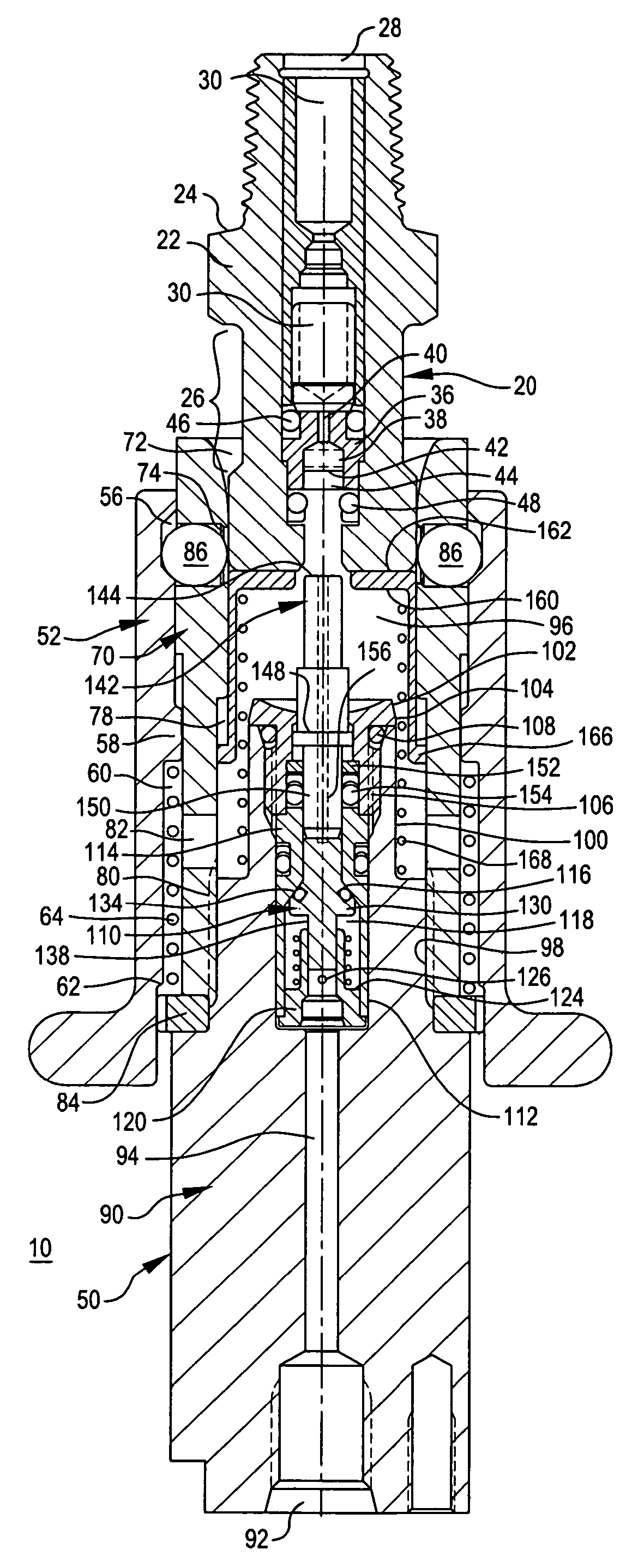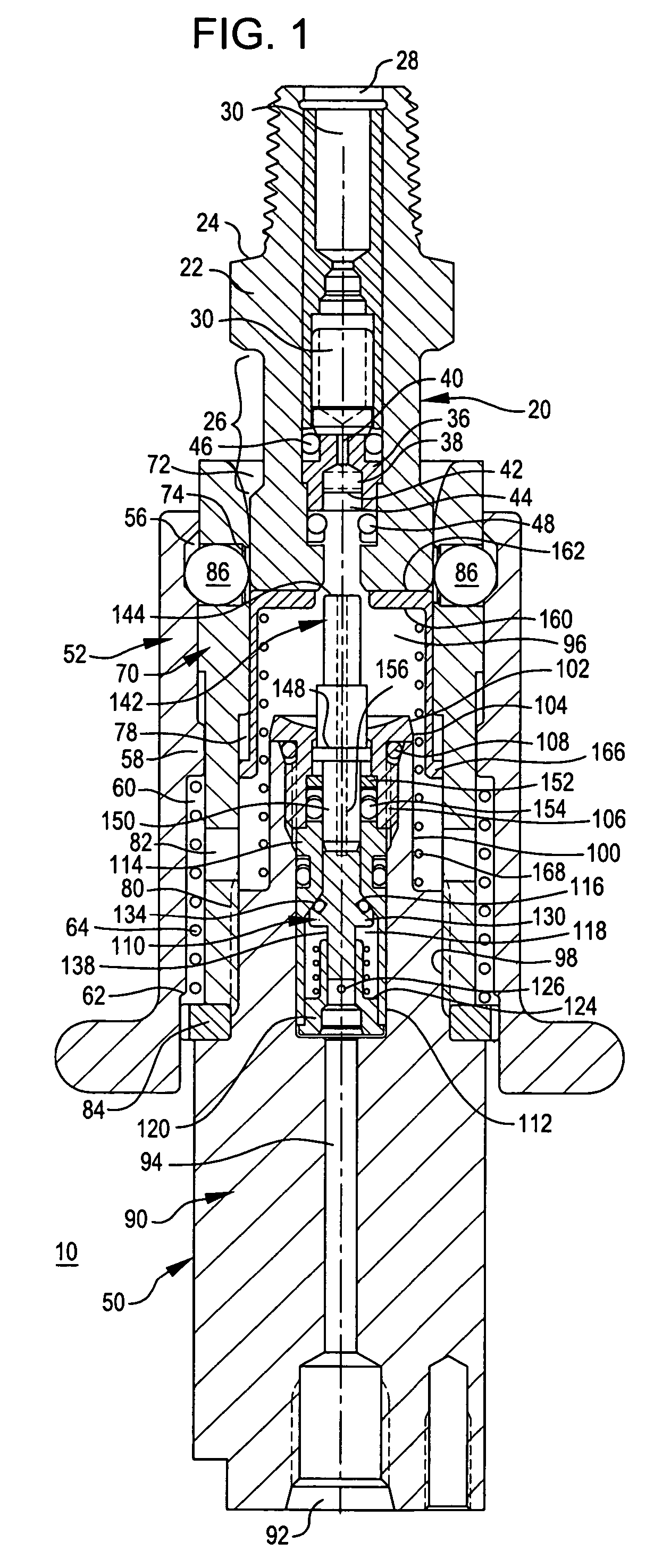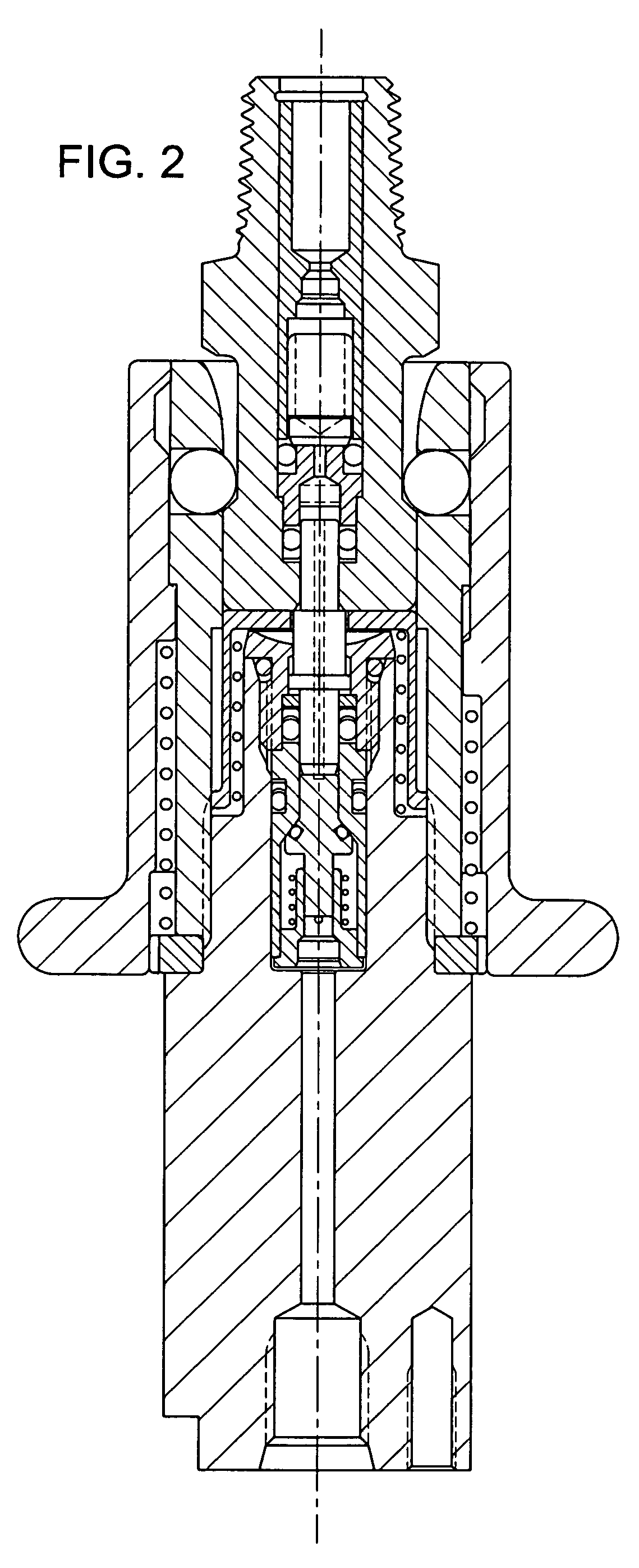Pressurized fluid coupler with anti-recoil feature and methods
- Summary
- Abstract
- Description
- Claims
- Application Information
AI Technical Summary
Benefits of technology
Problems solved by technology
Method used
Image
Examples
Embodiment Construction
[0015] The following discussion is presented to enable a person skilled in the art to make and use the invention. Various modifications to the preferred embodiment will be readily apparent to those skilled in the art, and the generic principles herein may be applied to other embodiments and applications without departing from the spirit and scope of the present invention as defined by the appended claims. Thus, the present invention is not intended to be limited to the embodiment show, but is to be accorded the widest scope consistent with the principles and features disclosed herein.
[0016] Turning then to the several Figures, wherein like numerals indicate like parts, and more particularly to FIG. 1, coupler 10 is shown in cross section for ease of viewing. Coupler 10 comprises male fitting 20 and female fitting 50, which are intended to link to sources of high pressure fluid such as compressed gas, via threaded port 28 and threaded port 92, respectively. Unless otherwise noted or...
PUM
 Login to View More
Login to View More Abstract
Description
Claims
Application Information
 Login to View More
Login to View More - R&D
- Intellectual Property
- Life Sciences
- Materials
- Tech Scout
- Unparalleled Data Quality
- Higher Quality Content
- 60% Fewer Hallucinations
Browse by: Latest US Patents, China's latest patents, Technical Efficacy Thesaurus, Application Domain, Technology Topic, Popular Technical Reports.
© 2025 PatSnap. All rights reserved.Legal|Privacy policy|Modern Slavery Act Transparency Statement|Sitemap|About US| Contact US: help@patsnap.com



